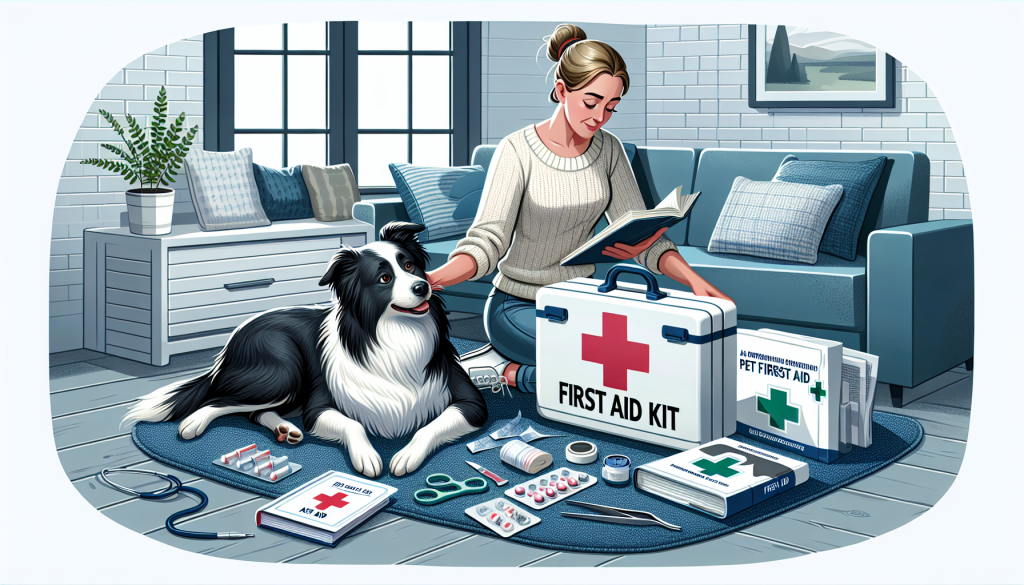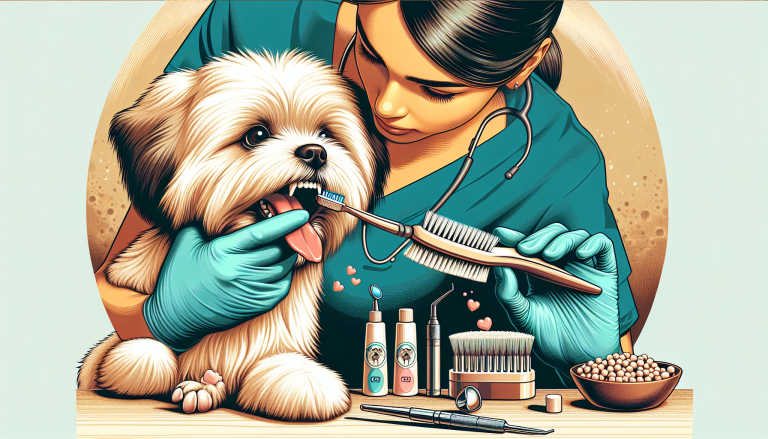In this article, you will discover the ultimate guide to pet first aid. Whether you’re a seasoned pet owner or a new pet parent, it’s important to be prepared for any health emergencies that may arise. From minor cuts and scrapes to more serious conditions, this comprehensive guide will provide you with the knowledge and techniques you need to effectively handle pet emergencies. With practical tips and step-by-step instructions, you’ll gain the confidence to act swiftly and confidently in times of need, ensuring the well-being of your beloved furry friend.
Table of Contents
ToggleBasic First Aid for Pets
It’s always important to be prepared for emergencies, especially when it comes to our beloved pets. Knowing the basics of pet first aid can make all the difference in saving their lives. In this comprehensive guide, we will take you through the essential steps of providing first aid to your pets, from recognizing emergency situations to handling common injuries.
Recognizing Emergency Situations
Being able to recognize emergency situations is the first step in providing timely and effective first aid to your pet. Some common signs of emergencies include difficulty breathing, excessive bleeding, sudden collapse, inability to urinate or defecate, seizures, or uncontrollable vomiting or diarrhea. If you notice any of these signs, it’s crucial to act quickly and seek veterinary attention as soon as possible.
Creating a Pet First Aid Kit
Having a well-stocked first aid kit specifically tailored for your pet is essential in handling emergencies. Some essential items to include in your pet first aid kit are sterile gauze pads, adhesive tape, antiseptic wipes, bandage scissors, tweezers, a digital thermometer, disposable gloves, and a pet first aid manual. Make sure to regularly check and replenish your kit to ensure its readiness in case of an emergency.
Knowing Your Pet’s Vital Signs
Understanding your pet’s vital signs can help you determine if they’re experiencing a medical emergency. The key vital signs to monitor include body temperature, heart rate, and respiration rate. Normal body temperature for dogs ranges from 100.5°F to 102.5°F (38°C to 39.2°C), while for cats, it ranges from 100°F to 102.5°F (37.8°C to 39.2°C). The average heart rate for dogs is 60-140 beats per minute, while for cats, it ranges from 140-220 beats per minute. The normal respiration rate for dogs and cats is around 10-30 breaths per minute.
Handling Common Injuries
Accidents happen, and it’s important to know how to handle common injuries your pet may encounter. From cuts and wounds to burns and fractures, quick and appropriate action can aid in their recovery.
Cuts and Wounds
If your pet suffers a cut or wound, it’s essential to clean the area and stop the bleeding. Start by gently flushing the wound with clean water or a saline solution. Apply an antiseptic ointment and cover the wound with a sterile gauze pad. If the bleeding doesn’t stop or the wound is deep, it’s important to seek veterinary care.
Burns and Scalds
Burns and scalds can occur from exposure to hot surfaces, chemicals, or even boiling water. If your pet suffers a burn, immediately flush the affected area with cool water for at least 5 minutes. Avoid using ice or very cold water, as it may further damage the tissue. Apply a sterile dressing to protect the burn and seek veterinary care.
Fractures and Sprains
If you suspect your pet has a fracture or sprain, it’s crucial to handle them with care. Avoid moving the injured limb and provide a makeshift splint using a stiff material, such as a rolled-up newspaper or a wooden board. Secure the splint in place using bandages, but make sure not to apply excessive pressure. Transport your pet to the veterinarian as soon as possible for further evaluation and treatment.
Poisoning and Toxin Ingestion
Pets are curious creatures, and they may accidentally ingest substances that are toxic to them. If you suspect your pet has ingested something harmful, contact your veterinarian or a pet poison control helpline immediately. They will guide you through the necessary steps based on the type of toxin ingested. It’s important to keep a record of the substance your pet has ingested, as it will assist the veterinarian in providing appropriate treatment.
CPR and Resuscitation
In critical situations, knowing how to perform cardiopulmonary resuscitation (CPR) and rescue breathing can save your pet’s life. It is important to remember that these techniques should only be used when a pet is unresponsive and not breathing.
Learning Pet CPR
Pet CPR involves a combination of chest compressions and rescue breaths. To perform CPR on your pet, place them on a flat surface and ensure they are lying on their right side. Begin by giving 30 chest compressions by applying pressure to the chest just behind the elbow. Follow this with two rescue breaths, making sure the airway is clear. Repeat the cycle of compressions and breaths until you reach a veterinary care facility.
Performing Rescue Breathing
Rescue breathing is vital for pets who have stopped breathing. Begin by extending your pet’s neck and carefully closing their mouth. Create an airtight seal by placing your mouth over their nose. Give a slow breath over 1-2 seconds and observe for chest rise. If the breath does not go in, reposition the head and try again. Continue rescue breathing at a rate of 10 breaths per minute until veterinary assistance is available.
Administering Chest Compressions
During CPR, chest compressions stimulate the heart and mimic its pumping action. After giving rescue breaths, place your hands, one on top of the other, over the widest part of your pet’s chest. Firmly compress the chest at a rate of 100-120 compressions per minute. Continue this cycle of compressions and breaths until you can transfer your pet to a veterinary professional.
Dealing with Choking and Suffocation
Choking is a dangerous situation that requires immediate action. The Heimlich maneuver, commonly used in humans, can also be performed on pets to dislodge an obstructed airway.
Signs of Choking in Pets
If your pet is choking, they may paw at their mouth, have difficulty breathing, or exhibit distress. They may be making choking sounds, coughing, or have blue-tinged gums. It’s crucial to assess the situation and intervene promptly to avoid further complications.
Performing the Heimlich Maneuver on Pets
To perform the Heimlich maneuver on a pet, stand behind them and place your hands just below their ribcage. Apply firm, upward pressure to dislodge the object. If the object is too large to remove or your pet becomes unresponsive, proceed with CPR and seek veterinary attention immediately.
Treating Heatstroke and Hypothermia
Extreme temperatures pose a risk to pets, and it’s important to monitor their well-being to prevent heatstroke or hypothermia.
Recognizing Signs of Heatstroke and Hypothermia
Heatstroke occurs when a pet’s body temperature exceeds normal limits due to exposure to excessive heat. Symptoms include excessive panting, weakness, collapse, vomiting, and seizures. Conversely, hypothermia occurs when a pet’s body temperature drops dangerously low due to exposure to extreme cold. Signs of hypothermia include shivering, lethargy, weak pulse, and pale gums.
First Aid for Heatstroke
If your pet shows signs of heatstroke, move them to a cool, shaded area immediately. Wet their coat with cool (not cold) water and offer them small amounts of water to drink. Place a cool, wet towel on their head and neck. Contact your veterinarian promptly, as heatstroke can be life-threatening.
First Aid for Hypothermia
If your pet is suffering from hypothermia, move them to a warm and dry area. Wrap them in dry blankets or towels to gradually warm them. Use warm water bottles wrapped in towels to provide gentle heat. Avoid using direct heat sources or hot water, as it can cause burns. Seek veterinary attention as soon as possible.
Managing Allergic Reactions
Pets, like humans, can develop allergic reactions to various substances, including foods, medications, or environmental factors. Being able to identify allergic reactions and provide appropriate treatment is vital in ensuring their well-being.
Identifying Allergic Reactions in Pets
Allergic reactions in pets may manifest as itching, redness, hives, swelling, sneezing, coughing, or difficulty breathing. Frequent scratching, licking, or biting of the skin may indicate an allergic response. It’s important to consult your veterinarian for an accurate diagnosis and treatment plan.
Administering Medication for Allergies
Your veterinarian may prescribe medication, such as antihistamines or corticosteroids, to alleviate your pet’s allergic symptoms. Follow the prescribed dosage and administration instructions carefully. Be sure to monitor your pet for any adverse reactions and consult your veterinarian if necessary.
Using an EpiPen for Severe Reactions
In severe allergic reactions known as anaphylaxis, an EpiPen may be necessary to provide immediate relief. EpiPens contain epinephrine, a medication that helps counteract the allergic response. Consult your veterinarian for proper training on how to use an EpiPen and keep it within reach in case of emergencies.
Addressing Eye and Ear Injuries
Injuries to the eyes and ears can cause discomfort and potentially lead to more serious complications if left untreated. Knowing how to address these injuries can help prevent further damage to your pet’s sensory organs.
Common Causes of Eye and Ear Injuries in Pets
Eye injuries can occur from foreign objects, scratches, or trauma. Ear injuries can result from infections, foreign bodies, or excessive scratching. It’s important to identify the cause to provide appropriate first aid.
Treating Minor Eye Injuries
If your pet has a minor eye injury, gently flush the eye with sterile saline solution or clean water. Avoid touching the eye with any objects and refrain from applying any medications without veterinary guidance. If the injury worsens or your pet shows signs of discomfort, consult your veterinarian.
First Aid for Ear Infections
Ear infections can cause pain and discomfort to your pet. To provide first aid, use a vet-approved ear cleaner to gently clean the outer ear. Avoid inserting any objects into the ear canal, as it may cause further damage. If the infection persists or worsens, consult your veterinarian for appropriate treatment.
Handling Seizures and Convulsions
Seizures and convulsions can be distressing for both pets and their owners. Knowing how to recognize and provide first aid during these episodes is crucial for your pet’s safety and well-being.
Recognizing Seizure Symptoms
Seizures can present as involuntary convulsions, loss of consciousness, drooling, foaming at the mouth, or jerking movements. It’s important to remain calm and ensure your pet’s safety during these episodes.
Providing First Aid During a Seizure
During a seizure, keep your pet away from any potential hazards to prevent injury. Do not restrain them or put anything in their mouth, as it may cause further harm. Note the duration and characteristics of the seizure to provide accurate information to your veterinarian. If the seizure lasts longer than 5 minutes or your pet experiences multiple seizures in a short period, seek veterinary care immediately.
Dealing with Insect Bites and Stings
Insects, such as bees, wasps, spiders, or fleas, can pose a threat to your pet’s well-being. It’s important to be able to identify common insect bites and stings and provide appropriate first aid.
Identifying Common Insect Bites and Stings
Insect bites and stings may cause swelling, redness, itching, and pain. Some pets may develop an allergic reaction to certain insect bites, resulting in more severe symptoms such as difficulty breathing or facial swelling. Knowing the signs and symptoms can help you identify the appropriate course of action.
Treating Mild Reactions
For mild insect bites or stings, remove the stinger (if present) by scraping it gently with a credit card or similar object. Apply a cold compress to the affected area to reduce swelling and provide relief. If your pet shows signs of an allergic reaction or the symptoms worsen, seek veterinary attention.
Managing Severe Allergic Reactions
In cases of severe allergic reactions, your pet may require immediate medical attention. Signs of a severe allergic reaction include difficulty breathing, facial swelling, weakness, or collapse. Contact your veterinarian or emergency veterinary clinic immediately for guidance and transportation instructions.
Emergency First Aid for Vomiting and Diarrhea
Vomiting and diarrhea are common issues that pets may face during their lifetime. While mild cases may resolve on their own, it’s important to know when to intervene and seek veterinary care.
Determining the Severity of Vomiting and Diarrhea
If your pet experiences occasional vomiting or diarrhea but is otherwise alert and active, you can take some steps to manage the situation at home. Ensure they have access to fresh water and provide a bland diet. However, if the vomiting or diarrhea persists for more than 24 hours, is accompanied by other concerning symptoms, or if your pet appears weak or lethargic, it’s important to consult your veterinarian.
Providing Rehydration and Nutrition
During episodes of vomiting or diarrhea, it’s important to keep your pet hydrated. Offer small amounts of water frequently to prevent dehydration. If your pet is unable to keep fluids down, consult your veterinarian for further guidance. Additionally, feeding a bland diet consisting of boiled chicken and rice may help soothe your pet’s stomach.
When to Seek Veterinary Care
If your pet’s vomiting or diarrhea persists, worsens, or is accompanied by symptoms such as blood in the stool, abdominal pain, or lethargy, it’s crucial to seek veterinary care. These signs may indicate underlying medical conditions that require professional evaluation and treatment.
Remember, while pet first aid knowledge is invaluable, it does not replace professional veterinary care. Always consult with your veterinarian for guidance and treatment in emergency situations. By being prepared and knowing the basics of pet first aid, you can provide vital support to your furry companions in times of need.








